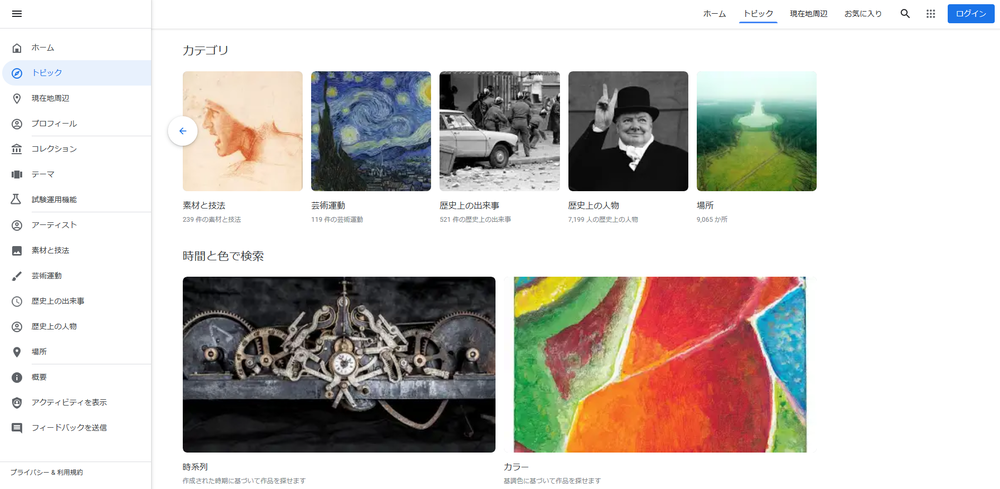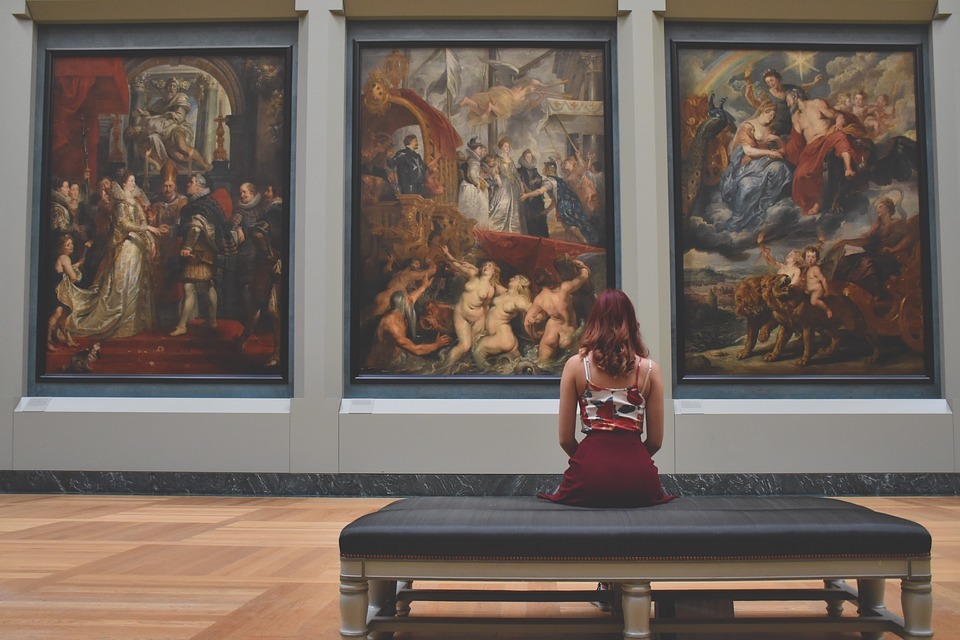世界中の名画・名品を無料で!こんな時だからこそ、オンラインで国内外のアートを自宅から堪能しちゃおう!
Google Arts & Culture って知ってる?
Google Arts & Culture では、世界中の文化遺産をオンラインで紹介することを目的に Google Cultural Institute と連携している 2000 以上の代表的な施設やアーカイブのコンテンツをご覧いただけます。
出典:artsandculture.google.com
Google Arts & Culture のすべてのコレクションを確認できます。
【スゴイ点①場所で検索】
「日本」→「コレクション」の中にある国内のおすすめ美術館
The National Museum of Western Art was established in April 1959 and was based on the Matsukata Collection focusing on the Impressionist paintings and Augu...
東京国立博物館は、明治5年(1872)、湯島聖堂の大成殿で開催された博覧会から始まる、日本で最も長い歴史をもつ博物館です。日本と東洋の美術および考古などさまざまな文化財について、収集、保存、修復、管理、展示、調査研究、教育普及事業などを行っています。 東京国立博物館の所蔵品は約11万7000件(うち国宝89...
東京富士美術館は、1983年、池田大作SGI(創価学会インタナショナル)会長により設立された総合的な美術館で、コレクションは、日本・東洋・西洋の各国、各時代の絵画・版画・写真・彫刻・陶磁・漆工・武具・刀剣・メダルなど様々なジャンルの作品約30,000点を収蔵しています。とりわけルネサンス時代からバロック・ロココ・...
「いわさきちひろ記念事業団」は、絵本画家・いわさきちひろ(1918-1974)の 遺族から、ちひろの全作品、資料ならびに美術館建設用地等の寄贈を受け、ちひろ の業績を記念し、絵本等の文化の発展に寄与する活動等をおこなうことを目的とし て設立されました。 1977年に、ちひろの自宅兼アトリエ跡に、「いわさきちひ...
Hakone Venetian Glass Museum was opened in August 8, 1996, as a specialized museum of Venetian glass. Our museum is located at Sengokuhara in Hakone town, ...
セゾン現代美術館は、国内外の現代美術家の作品を収集・展示する現代美術に特化した美術館です。収蔵品は20世紀初頭から活躍したワシリー・カンディンスキー、パウル・クレーをはじめ、戦後アメリカ美術を代表するジャクソン・ポロック、マーク・ロスコ、ジャスパー・ジョーンズ、日本の現代美術では、堂本尚郎、荒川修作、中西夏之らの...
In 1930, to commemorate Kojima Torajiro, a Western-style painter who died the previous year, Kurashiki entrepreneur, Ohara Magosaburo, founded the Ohara Mu...
北米・ロシア・アジア・欧州などのおすすめコレクションも満載!
Founded in 1929, The Museum of Modern Art (MoMA) in midtown Manhattan was the first museum devoted to the modern era. Today MoMA’s rich and varied collecti...
The Met presents over 5,000 years of art from around the world for everyone to experience and enjoy. The Museum lives in three iconic sites in New York Cit...
State Hermitage is one of the largest museums in the world. Its exhibitions include over 3 million exhibits representing Antiquity, Western Europe, Middle ...
The National Palace Museum houses one of the largest collections of Chinese art in the world. With nearly 700,000 precious artifacts, the museum’s extensiv...
The history of the museum, of its building is quite unusual. In the centre of Paris on the banks of the Seine, opposite the Tuileries Gardens, the museum w...
The Rijksmuseum is the museum of the Netherlands. Its world-famous masterworks from the Dutch Golden Age include the Milkmaid by Vermeer and Rembrandt's Ni...
The Uffizi was designed by Giorgio Vasari in 1560 for Cosimo I de'Medici to house the Granducal Magistratures of Tuscany. Over time, the top floor loggia b...
The National Gallery Collection contains over 2,300 works, including many famous works, such as van Eyck’s 'Arnolfini Portrait', Velázquez’s 'Rokeby Venus'...
【スゴイ点②アーティスト名で検索】
【スゴイ点③カテゴリで検索】

【スゴイ点④360°ビデオとストリートビュー】
Google Arts & Culture では、世界中の文化遺産をオンラインで紹介することを目的に Google Cultural Institute と連携している 2,000 以上の代表的な施設やアーカイブのコンテンツをご覧いただけます。
Google Arts & Culture では、世界中の文化遺産をオンラインで紹介することを目的に Google Cultural Institute と連携している 2,000 以上の代表的な施設やアーカイブのコンテンツをご覧いただけます。
遊びゴコロをくすぐる機能がいっぱい!
関連記事はこちら
「コロナが落ち着いたらどこかへ行きたいな~」、そう考えているご家庭は多いハズ! 今回は、トリップアドバイザーの口コミから選ばれた「美術館・博物館ランキング2020」をご紹介しますよー!さらにそのなかから、子連れでも楽しみやすいおすすめ施設をピックアップ! ぜひぜひ候補に入れておいてッッ♪
小さな子連れでの美術館なんて行けないよ~と敬遠するなかれ!感性豊かな幼いうちに本物の芸術に触れる機会を増やしてあげましょう。この秋こそ、子どもと一緒に初めての本格的な芸術鑑賞を楽しんでみてください!


























